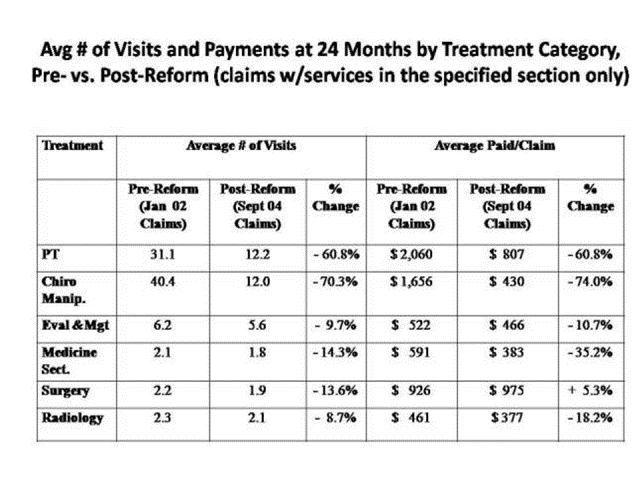The California Workers’ Compensation Institute has published a new study showing that while medical cost containment (MCC) expenses in California workers’ compensation increased after recent reforms took effect, those additional costs were more than offset by significant reductions in average medical care payments.
California lawmakers enacted several medical cost containment reforms in 2003 and 2004 – including mandatory utilization review programs and the introduction of Medical Provider Networks as of 2005. The study, based on data from nearly one million 2002-2005 California work injury claims, tracked the average amount paid for medical cost containment (i.e., medical bill review, medical case management, utilization review and network fees), and for medical treatment, at 12 and 24 months post injury for pre- and post-reform claims.
Average Medical Cost Containment Payments Vs. Average Medical Treatment Payments
Comparing data from pre-reform (2002) and post-reform (2005) injury claims, the study found the average amount paid for medical cost containment in the first year rose $60 after the reforms took effect, while the average amount paid for treatment declined $620. The comparison of payments at 24 months post injury showed average medical cost containment expenses rose $92 from $250 for 2002 injury claims to $342 for 2004 injury claims, while the average amount paid for treatment fell from $4,494 to $3,618 – a savings of $876.
The study also tracks MCC to medical treatment payment ratios and breaks out results for medical-only and indemnity claims. CWCI has issued a report on the study, Analysis of California Workers’ Comp Reforms: Changes in Medical Cost Containment Payments,” posted online in the Research section at (www.cwci.org)

